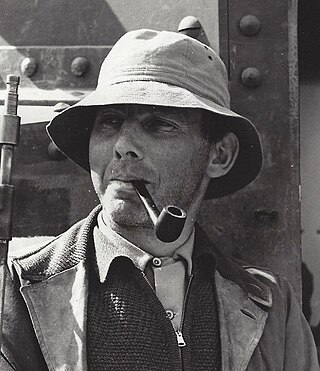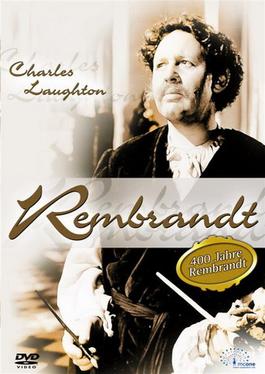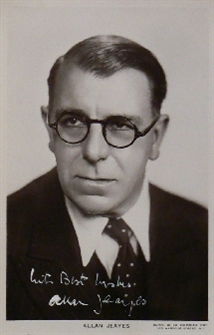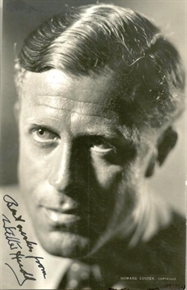
Mowgli is a fictional character and the protagonist of the Mowgli stories featured among Rudyard Kipling's The Jungle Book stories. He is a feral boy from the Pench area in Seoni, Madhya Pradesh, India, who originally appeared in Kipling's short story "In the Rukh" and then became the most prominent character in the collections The Jungle Book and The Second Jungle Book (1894–1895), which also featured stories about other characters.

Sir Alexander Korda was a Hungarian–born British film director, producer, and screenwriter, who founded his own film production studios and film distribution company.

The Jungle Book is an 1894 collection of stories by the English author Rudyard Kipling. Most of the characters are animals such as Shere Khan the tiger and Baloo the bear, though a principal character is the boy or "man-cub" Mowgli, who is raised in the jungle by wolves. Most stories are set in a forest in India; one place mentioned repeatedly is "Seeonee" (Seoni), in the central state of Madhya Pradesh.

The Second Jungle Book is a sequel to The Jungle Book by Rudyard Kipling. First published in 1895, it features five stories about Mowgli and three unrelated stories, all but one set in India, most of which Kipling wrote while living in Vermont. All of the stories were previously published in magazines in 1894–5, often under different titles. The 1994 film The Jungle Book used it as a source.

Shere Khan is a fictional Bengal tiger in Rudyard Kipling's Jungle Book and its adaptations, in which he is often portrayed as the main antagonist, itself an exaggeration of his role in the original stories, which he only appears in a third of. The name roughly translates as tiger ruler, with shere being the Persian word for 'tiger'), and khan being used as a title of distinction among the Turco-Mongol peoples, usually meaning chief or ruler. According to The Kipling Society, the name "show[s] that he is the chief among tigers". Shere Khan is named after Afghan Emperor Sher Shah Suri.

George Peress Sanderson was a British naturalist who worked in the public works department in the princely state of Mysore. He began a system for capturing wild elephants that were destructive to agriculture so as to use them in captivity. He was known in the popular press as the "Elephant King" and wrote a book on his life in the forests of India. Rudyard Kipling is believed to have modelled the character "Petersen Sahib" in his Toomai of the elephants after him.

Sabu Dastagir was an Indian actor who later gained United States citizenship. Throughout his career he was credited under the name Sabu and is primarily known for his work in films during the 1930s–1940s in Britain and the United States. He was inducted into the Hollywood Walk of Fame in 1960.

Jungle Book is a 1942 independent Technicolor action-adventure film by the Korda brothers, loosely adapted from Rudyard Kipling's The Jungle Book (1894). The story centers on Mowgli, a feral young man who is kidnapped by villagers who are cruel to the jungle animals as they attempt to steal a dead king's cursed treasure. The film was directed by Zoltán Korda and produced by his brother Alexander, with the art direction by their younger brother Vincent. The screenplay was written by Laurence Stallings. The film stars Indian-born actor Sabu as Mowgli. Although the film is in the public domain, the master 35mm elements are with ITV Studios Global Entertainment. An official video release is currently available via The Criterion Collection.
Elephant Boy may refer to:

Zoltan Korda was a Hungarian-born motion picture screenwriter, director and producer. He made his first film in Hungary in 1918 and worked with his brother Alexander Korda on film-making there and in London. They both moved to the United States in 1940 to Hollywood and the American film industry.

The Thief of Bagdad is a 1940 British Technicolor historical fantasy film, produced by Alexander Korda and directed by Michael Powell, Ludwig Berger and Tim Whelan, with additional contributions by William Cameron Menzies and Korda brothers Vincent and Zoltán. The film stars Indian-born teen actor Sabu, Conrad Veidt, John Justin, and June Duprez. It was released in the US and the UK by United Artists.

Rembrandt is a 1936 British biographical film made by London Film Productions of the life of 17th-century Dutch painter Rembrandt van Rijn. The film was produced and directed by Alexander Korda from a screenplay by June Head and Lajos Bíró based on a story by Carl Zuckmayer. The music score was by Geoffrey Toye and the cinematography by Georges Périnal.

Storm Over the Nile is a 1955 British adventure film adaptation of the 1902 novel The Four Feathers, directed by Terence Young and Zoltan Korda. The film not only extensively used footage of the action scenes from the 1939 film version stretched into CinemaScope, but is a shot-for-shot, almost line-for-line remake of the earlier film, which was also directed by Korda. Several pieces of music by the original composer Miklos Rozsa were also utilized. It featured Anthony Steel, Laurence Harvey, James Robertson Justice, Mary Ure, Ian Carmichael, Michael Hordern and Christopher Lee. The film was shot on location in the Sudan.
The 5th annual Venice International Film Festival was held between 10 August and 3 September 1937. The new Palazzo del Cinema building was completed for this year's festival. It has been used as the venue since, excluding the years 1940 to 1948.

Allan John Jeayes was an English stage and film actor.

"Toomai of the Elephants" is a short story by Rudyard Kipling about a young elephant-handler. It was first published in the December 1893 issue of St. Nicholas magazine and reprinted in the collection of Kipling short stories, The Jungle Book (1894). The character Petersen Sahib is thought to be modelled on India-born English naturalist George P. Sanderson (1848–1892).

"Rikki-Tikki-Tavi" is a short story in the 1894 short story collection The Jungle Book by Rudyard Kipling about adventures of a valiant young Indian grey mongoose. It has often been anthologized and published several times as a short book. Book 5 of Panchatantra, an ancient Indian collection, includes the mongoose and snake story, an inspiration for the "Rikki-Tikki-Tavi" story.

Walter Hudd was a British actor and director.
Filmmakers and others have made many adaptations of The Jungle Book stories by Rudyard Kipling. The stories, inspired by Kipling's life in India, were published in the 1894 The Jungle Book and its 1895 sequel, The Second Jungle Book.
















